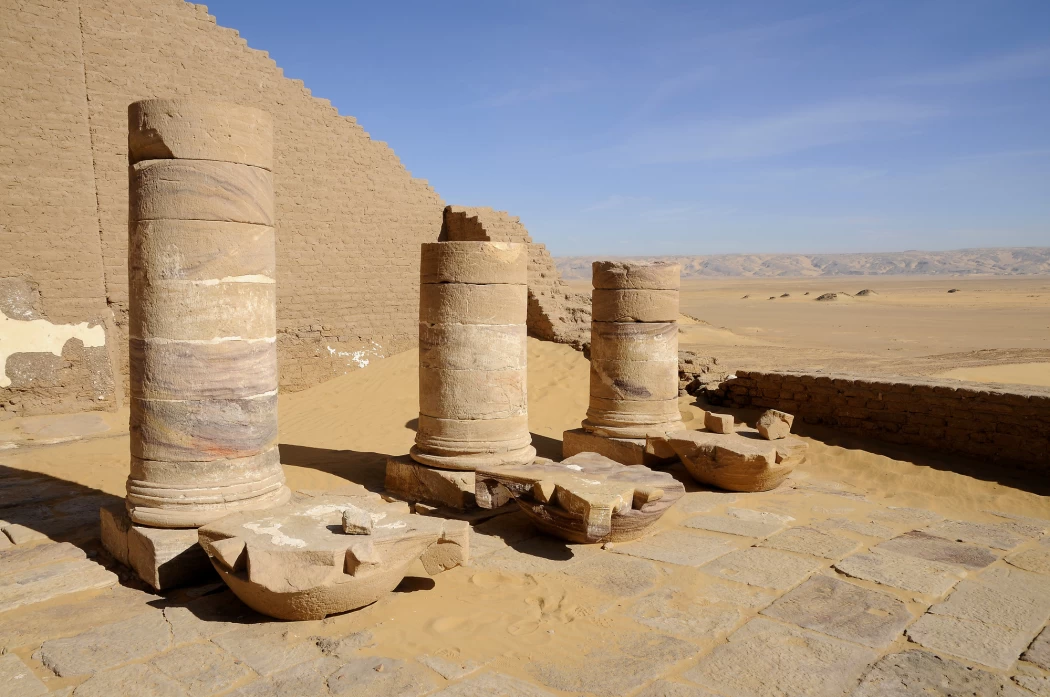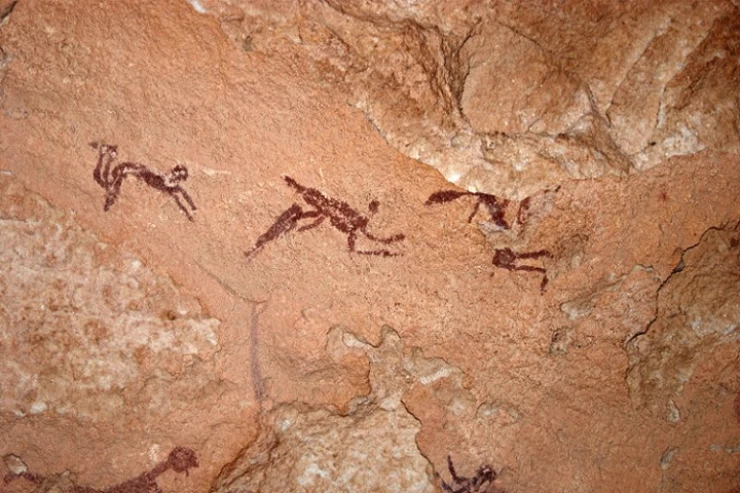
Temple of Dush in Kharga Oasis
The temple is situated near the Kharga Oasis and is completely encircled by a stronghold made of mud bricks. The temple was constructed as a tribute to the deity Serapis and the goddess Isis. The slave trade was the main cause of the development of the religious, military, and civilian complex known as Dush. It served as a staging area for caravans that were either traveling to Esna or Assiut.
There is a barrel-vaulted sanctuary, consisting of two connected chambers with a vaulted roof, accessible when entering the temple by any of its several entrances. Churches can be found on each side of the sanctuary. There is no entry fee, and the temple is open from 7:00 a.m. to 5:00 p.m.
It is thought that the temple was coated in gold, even though there aren't many ornaments today. On the walls of the temple, however, are scenes that include all three of the Roman Emperors. The temple is fronted by a colossal stone entrance that bears a 116 AD dedicatory inscription by Trajan. A sizable courtyard with five columns and a pylon at its northern end is located to the north.
The temple's main area is around 7.5 by 15.5 meters and includes an inner sanctuary with a vaulted ceiling, an offering table in an outer chamber, a stairway leading to the roof, and a pillared hall with four thin columns. The roofs of the two long side rooms were likewise barrel-vaulted. Later, a taller pronaos was constructed to the main building's front.
The temple's courtyards have yielded numerous artifacts, including as coins, ceramics, and a sizable collection of demotic ostraca that date back to the Persian Period. Some look to be from the early 4th or early 5th century and were also written in Greek. Names of particular troops and citizens are included, although the majority of them are receipts and payments for goods used by the Roman army.















